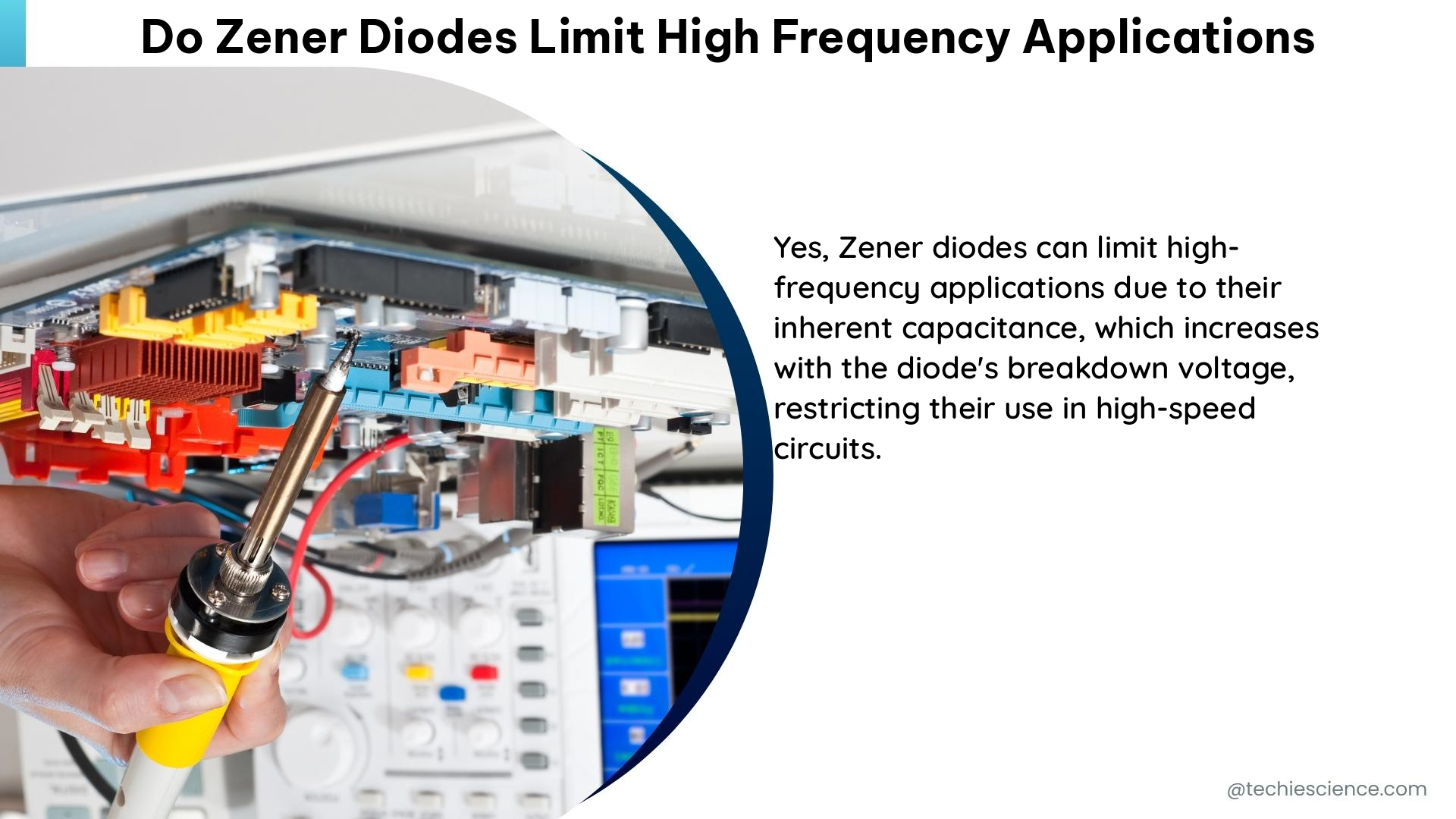Zener diodes are widely used in various electronic circuits for voltage regulation, wave shaping, and transient voltage suppression. However, their high-frequency performance is often a subject of concern due to their parasitic capacitance, which can limit their effectiveness in high-speed applications.
Understanding Parasitic Capacitance in Zener Diodes
Parasitic capacitance in Zener diodes is an inherent property that arises due to the reverse-biased junction between the p- and n-type materials. This capacitance can significantly affect the frequency response of a circuit, causing phase shifts, attenuation, and oscillations. Therefore, it is crucial to consider the Zener diode’s parasitic capacitance while designing high-frequency circuits.
The parasitic capacitance of a Zener diode can be quantified by measuring its junction capacitance, which is the capacitance associated with the reverse-biased junction. The junction capacitance of a Zener diode depends on its nominal operating voltage, dice size, and reverse voltage. For example, Figure 21 in the “Zener Diode – ON Semiconductor Is Now” document shows a plot of junction capacitance versus nominal operating voltage for diffused Zener diode units of various dice sizes. The capacitance is obtained with a reverse bias set at one-half the nominal VZ. The plot covers most On Semiconductor diffused-junction Zeners with voltage ranges from 6.8 V to 200 V.
| Nominal Operating Voltage (V) | Junction Capacitance (pF) |
|---|---|
| 6.8 | 15 |
| 12 | 10 |
| 30 | 5 |
| 100 | 2 |
| 200 | 1 |
As shown in the table, the junction capacitance of Zener diodes decreases as the nominal operating voltage increases, with the highest capacitance of 15 pF for a 6.8 V Zener diode and the lowest capacitance of 1 pF for a 200 V Zener diode.
Impact of Zener Diode Capacitance on High-Frequency Applications

In high-frequency applications, the Zener diode’s junction capacitance can limit its time response, causing edge distortion and noise immunity. For instance, in a transient voltage suppression circuit using a Zener diode and a resistive divider to protect from overvoltage, the diode capacitance likely limits the time response of the circuit. As the reverse-bias voltage increases, the diode capacitance decreases, acting as a varactor diode. This changing capacitance can cause distortion in the input signal, particularly in high-frequency applications.
According to the “What is the upper frequency of a Zener used for transient voltage suppression?” post on Electronics Stack Exchange, the upper frequency limit of a Zener diode used for transient voltage suppression is typically around 1 MHz. Beyond this frequency, the Zener diode’s parasitic capacitance starts to become a significant factor, limiting its effectiveness in suppressing high-frequency transients.
Mitigating the High-Frequency Limitations of Zener Diodes
To mitigate the high-frequency limitations of Zener diodes, it is essential to consider their parasitic capacitance while designing circuits. This can be achieved by using Zener diodes with lower junction capacitance, adding series inductance to compensate for the capacitance, or using alternative voltage regulation techniques such as switching regulators or voltage references.
According to the “Diode Application Handbook Fundamentals, Characteristics, and Uses in Circuit Design” document, some strategies to improve the high-frequency performance of Zener diodes include:
- Selecting Zener diodes with lower junction capacitance, such as those with higher nominal operating voltages.
- Adding a series inductor to form a resonant circuit that cancels out the Zener diode’s capacitance at the desired frequency.
- Utilizing switching regulators or voltage references, which can provide better high-frequency performance compared to Zener diode-based voltage regulation.
The “Assessing Zener-Diode-Structure Reliability From Zener Diodes’ Low-Frequency Noise” research paper also suggests that the high-frequency performance of Zener diodes can be improved by optimizing the device structure and fabrication process to reduce the parasitic capacitance.
Conclusion
In summary, Zener diodes can limit high-frequency applications due to their parasitic capacitance, which can cause phase shifts, attenuation, and oscillations. By understanding the Zener diode’s junction capacitance and its impact on the circuit’s frequency response, designers can take appropriate measures to mitigate these limitations and ensure optimal performance in high-frequency applications.
References:
- Zener Diode – ON Semiconductor Is Now
- What is the upper frequency of a Zener used for transient voltage suppression?
- Assessing Zener-Diode-Structure Reliability From Zener Diodes’ Low-Frequency Noise
- Diode Application Handbook Fundamentals, Characteristics, and Uses in Circuit Design
- Zener diodes in high frequencies – Eng-Tips

The lambdageeks.com Core SME Team is a group of experienced subject matter experts from diverse scientific and technical fields including Physics, Chemistry, Technology,Electronics & Electrical Engineering, Automotive, Mechanical Engineering. Our team collaborates to create high-quality, well-researched articles on a wide range of science and technology topics for the lambdageeks.com website.
All Our Senior SME are having more than 7 Years of experience in the respective fields . They are either Working Industry Professionals or assocaited With different Universities. Refer Our Authors Page to get to know About our Core SMEs.